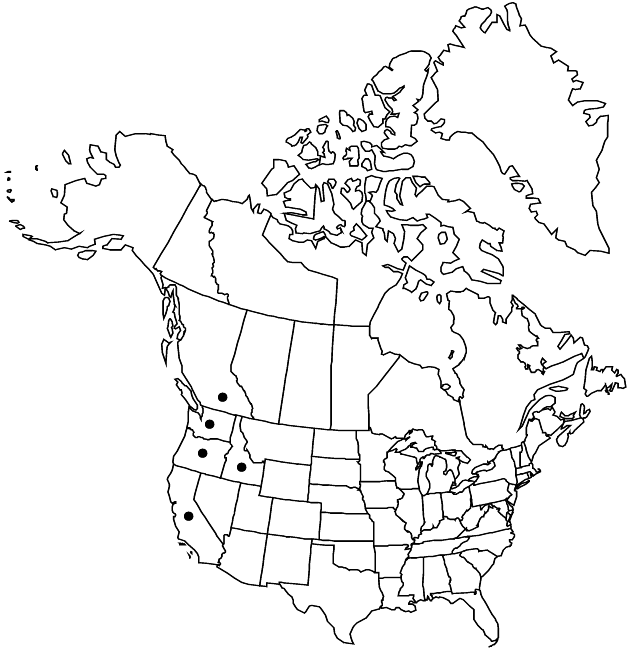Agoseris grandiflora var. leptophylla
Sida 21: 267. 2004.
Leaves: blades linear to filiform, 10–36 cm × 2–4(–8) mm (excluding lobes), margins usually laciniately or finely pinnatifid, sometimes toothed, lobes or teeth linear to filiform. Involucres campanulate, 2–4 cm in fruit. Phyllaries mostly medially rosy purple and spotted, ± lanceolate, margins usually entire, rarely dentate; outer mostly subequal to, sometimes surpassing inner at flowering. Florets 40–60+. 2n = 18.
Phenology: Flowering Mar–Oct.
Habitat: Moist to dry lowland prairies, coastal forests, open coniferous woodlands
Elevation: 10–1800 m
Distribution

B.C., Calif., Idaho, Oreg., Wash.
Discussion
Variety leptophylla is most commonly found west of the Cascade Mountains from Vancouver Island through the Puget Sound and Willamette Valley to the Siskiyou-Klamath Mountains region of southwestern Oregon and northwestern California. It also occurs sporadically in mesic forest areas on the eastern slopes of the Cascade Mountains, and disjunctively in the Selkirk-Clearwater Mountains region of British Columbia and northern Idaho. In the Selkirk-Clearwater Mountains region, Columbia River Gorge, southern Willamette Valley, and Siskiyou-Klamath Mountains region var. grandiflora and var. leptophylla are sympatric and appear to be introgressive. In those regions, intermediate specimens are not uncommon. It may be one of the parental taxa of A. ×elata (which see), especially the Puget Sound-Willamette Valley populations.
Selected References
None.